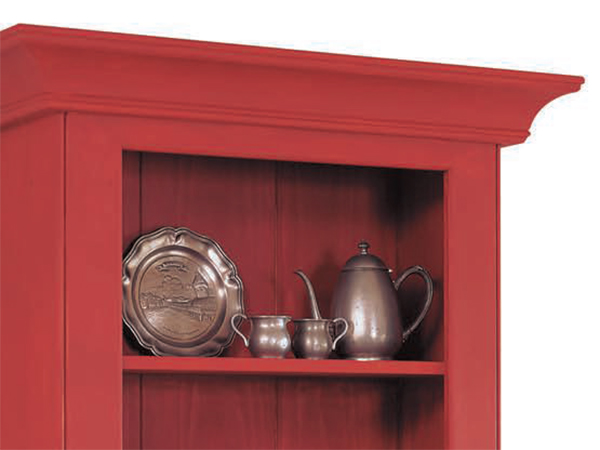
Milk paint is thousands of years old, and it’s quite possibly the first paint humans used. It shows up in the pyramids, on cave walls and in the U.S. on painted furniture and walls from our Colonial era.
The basic formula consists of a mixture of milk, lime and earth pigments — three items that were common to any Colonial farm. History suggests itinerant painters of the time brought along their own pigments to mix with local milk and lime. Although other additives have been tried over the years, including drying oils, chalk, calcium carbonate, albumin and hide glue, the basic mixture still works just fine today.
Why should you consider using such old technology in this day and age? Milk paint has a lot going for it, especially in today’s climate of chemically aware consumers. It’s green, in that you mix it by hand, it contains no petrochemicals, it’s made of local, all natural ingredients, and it’s nontoxic, environmentally friendly, biodegradable and contains no VOCs (volatile organic compounds) or HAPs (hazardous air pollutants).
The milk paint you can buy today looks like, and in fact is, the same thing they used back in the old days, yet it’s the ideal product for today’s trendy “shabby chic” look. Sold in powdered form, it has a very long shelf life, since you mix only what you need. It’s easy to apply, and once it goes onto your walls or furniture, it is surprisingly durable. After drying, its sheen is dead flat, but you can top it with boiled linseed oil, waterbased polyurethane or oil varnish to add gloss.
The easiest way to buy it is from one of two venerable and very reliable companies: The Old Fashioned Milk Paint Company and The Real Milk Paint Company. Both sell bags of high quality products in powdered form, ready to mix with water, so you don’t even need milk. A bag that makes a pint of paint costs about $10. Between the two companies, they offer over two dozen colors, and you can, of course, mix two or more colors to make your own custom hue.
You can also buy what is called milk paint in liquid form from companies like General Finishes (you’ll find it at www.rockler.com) but to be honest, it’s really acrylic paint made to match the sheen and colors of milk paint. Since milk paint works best on raw wood, this acrylic alternative may be a good choice for going atop already finished wood.
Just in case you have a yen to make it yourself, here’s a simple 19th century formula courtesy of Dwayne Siever at The Real Milk Paint Company. Get started by stirring enough skim milk into hydrated lime to make a cream. Add the balance of the skim milk. Now add a sufficient amount of limeproof powder pigment to create the desired color and consistency. Stir well for a few minutes before using and during use. Extra paint may be kept for several days in the refrigerator, until the milk sours.
MILK PAINT RECIPE
– 1 quart skim milk (room temperature)
– 1 ounce of hydrated lime (not quick lime) by weight
– 1 to 2-1⁄2 pounds of chalk may also be added as a filler.
– Limeproof powder pigment as needed





